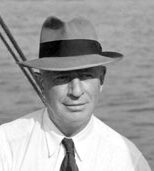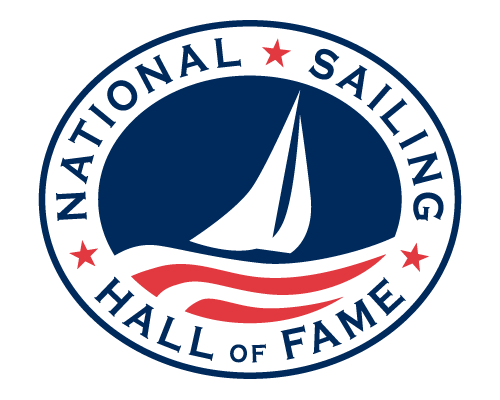
John Gale Alden
January 24, 1884 - March 3, 1962
Troy, New York
Play the word association game with any group of seasoned sailors and if “schooner” comes up, chances are the response will be “John Alden.” Taking his cue from the deeper hulls and finer lines of the swift Gloucester fishing schooners designed by the famed B.B. Crowninshield, with whom Alden had apprenticed, the smaller yacht versions Alden designed were things of beauty. He added a spoon bow of his own with high sheer forward and generous freeboard, making his “fisherman-type” schooners dry and comfortable for cruising. With the deepest part of the sheer occurring quite far aft, and with the graceful upturn of the stern and its moderate overhang, Aldens are distinctive for their pleasing visual harmony. The handsome boats were smaller than the day’s standard, and also fast. From 1923 to 1932, Alden designed ten schooners. All were named Malabar , after a vanished point of land off Cape Cod Alden thought sounded exotic. Three of them won Bermuda Races. Alden was the first man ever to win that race three times in yachts of his own design, which proved very good for business. In 1932, when he won in Malabar X – the largest of the Malabar group at 60’ LOA – the first four yachts to place were Alden schooners. Speed was not Alden’s consideration, at least not at the outset. A sailor from childhood who at age 16 had schemed to single-hand his family’s new 21-foot knockabout 300-miles from Troy, New York, to Little Compton, Rhode Island, his intention was to produce a boat that could stay at sea in any weather, that could be handled comfortably by one person. In the early boats like Malabar II (41’ 3” LOA), all sails were self-tending and had lazy jacks. The mast was stepped forward to create a smaller jib. But the boat was surprisingly quick in light air. As the book Fifty Wooden Boats concluded, “it was the efficiency of this rig combined with the carefully worked out lines that made Malabar II unique.” After the first few Malabars, Alden began tweaking the designs with speed in mind. But unlike today’s ocean racers, comfort and seakindliness were never sacrificed. A salty, unpretentious man who was most comfortable at the helm of his own boat, Alden wrote in Yachting (1913) that he didn’t want to “produce racers in disguise that would bring disillusionment to the trusty, smooth water sailor who attempted to take them to sea.” – Roger Vaughan
Preserving America’s Sailing Legacy
Engaging Sailing’s Next Generation
Stay Connected to the National Sailing Hall of Fame
